A Round Challah for a Sweet New Year
Celebrating Rosh Hashanah and the cycle of life with a circular loaf
If it’s September, it’s time to get ready for Rosh Hashanah, the Jewish New Year. This year the holiday begins at sundown on Friday, Sept. 15. As I write this I’m fairly covered with flour and dough from braiding golden loaves of challah at a class at our local synagogue, then making more at home. Though challahs (actually “challot” in the Hebrew plural)—egg-rich breads similar to brioche, but minus the butter and milk—are usually long braided loaves, for this holiday which celebrates the birth of the world and the cycle of life, we often make them in rounds, sometimes in fancy weaves or as simple spirals. At the Modernist Bread site where I found my latest favorite recipe for making challah (see below for more), the authors note that “depending on whom you ask, the round shape represents continuity, the wheel of the seasons, or a spiral of upward progress.”
For me, I think the circle is simply beautiful and elemental, an appealing shape for a celebratory loaf of bread.
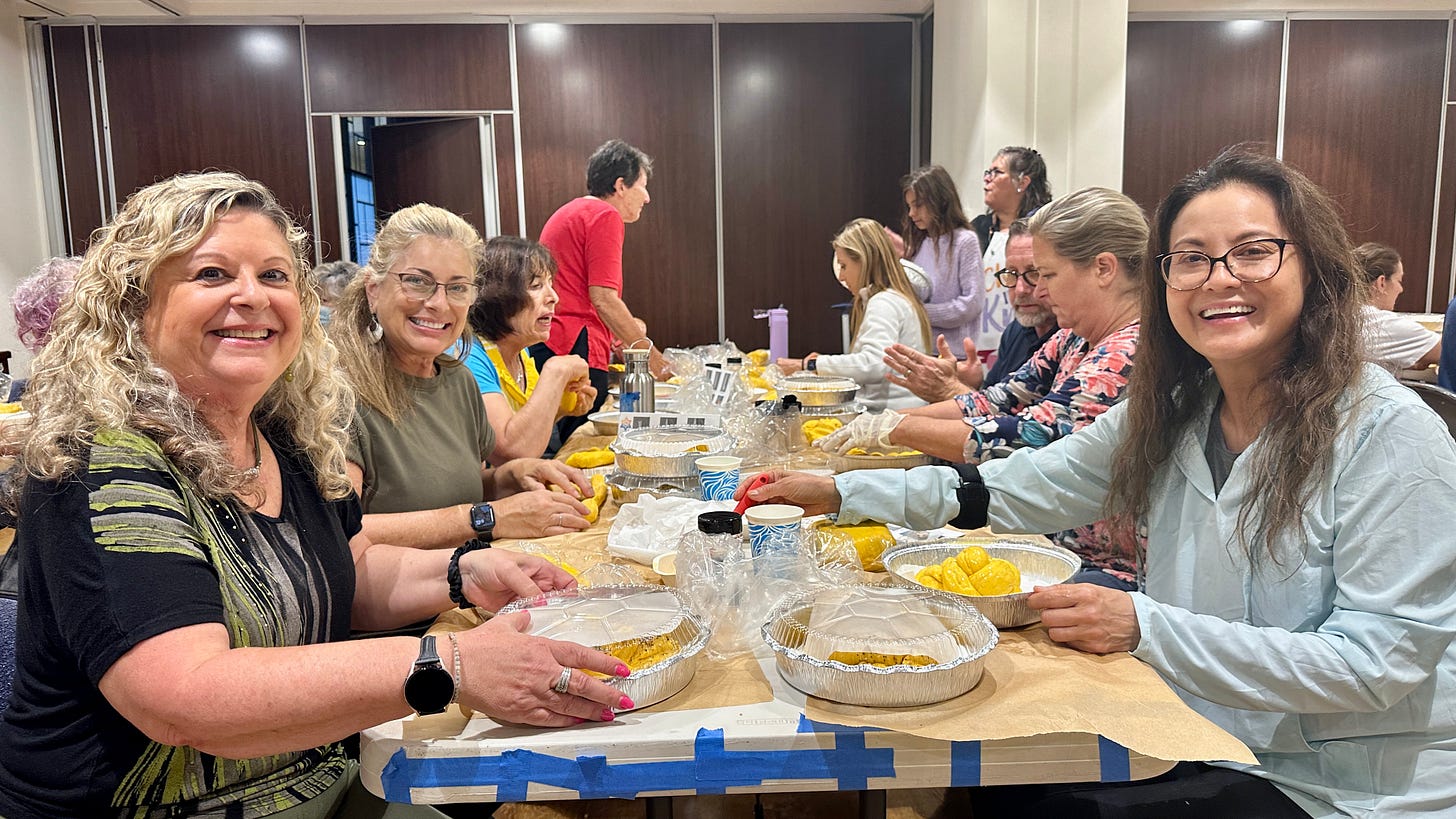
With so many participants, our class concentrated on fashioning the saffron-colored kosher dough provided by a local bagel company into all manner of approximations of circles, though some came out squarish or, in one case, a bit like a chicken!
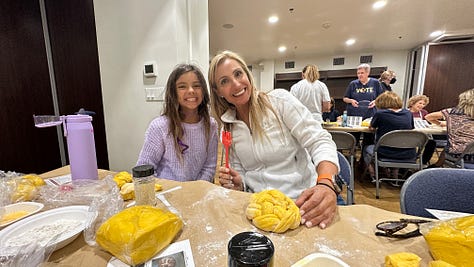
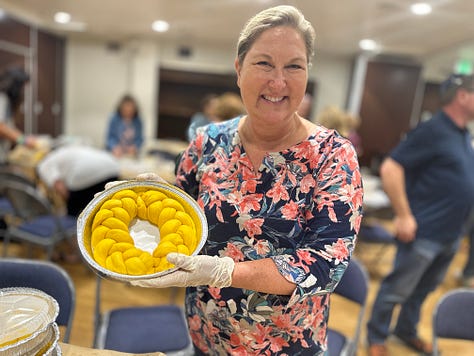
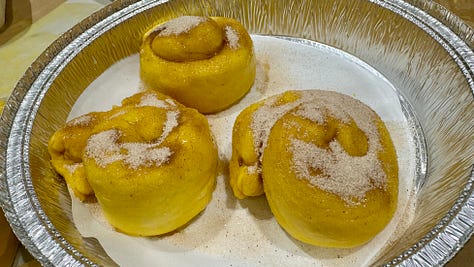
Although challah (in English, it’s usually pronounced “hah-luh”) has become widely popular not only among Jews but in the larger community, our rabbi, Joshua Kalev, explained that challah is first mentioned in the Torah and doesn’t refer to the soft white bread we’re so fond of eating.
Instead the biblical reference has to do with taking a small portion of the dough—usually about the size of an olive—to leave for God or in ancient times for the temple priests as an acknowledgement that there was a power greater than ourselves that provided the wheat (or other grains) to make this bread. In Jewish tradition, there are certain requirements connected to the weight of the bread and the use of water in making it that determine whether you need to separate a portion of the dough and say a prayer. For more details, here’s a link.
These days, there are no priests to donate the bread to, so for those who want to keep this mitzvah, the tiny portion of separated dough is wrapped in foil and burned in the oven or on a burner on the stovetop.
Growing up, even in a fairly observant household, I never heard anything about this tradition. My mother, though a fine baker, didn’t make the challah she served on Friday nights under an embroidered white cloth—she bought a delicious one sprinkled with poppy seeds at her favorite bakery.
For the important holidays of Rosh Hashanah and Yom Kippur, the Day of Atonement, when most of us fast and then eat a festive meal called a Break-Fast, a homemade challah only makes the occasion more special. And for those of you who don’t celebrate these holidays, challah, whether bought or homemade, is just plain delicious—and leftovers make the best French toast imaginable!
I’ve made many quite pretty loaves, including some with six strands, but when I go online and see such skillful examples of challah “art,” it’s humbling. On the other hand, there are a lot of YouTube tutorials and Instagram posts that give me inspiration for future improvement. Here are just a few examples of challah prowess culled from the internet.1

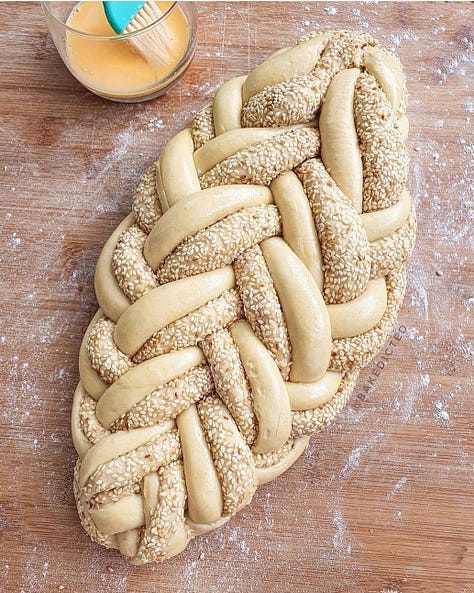
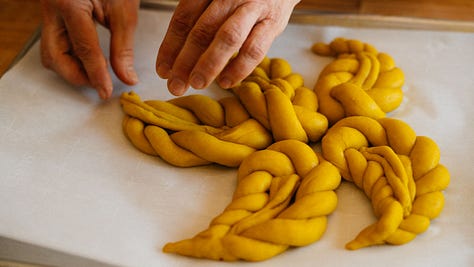
Despite a well-known phobia that many folks have about baking with yeast, homemade challah is easier to make than you think and actually a fun project to attempt, though it may take some practice, especially in the shaping department. If you have a bread making machine, you can even forego the kneading part, says Melissa Goodman Stein, who put together the recent CTJ class as well as one I wrote about in a previous post.
Holy Challah: A Tale of 2 Loaves
Melissa Stein’s machine-risen challah, sprinkled with seeds and shaped by hand. When I was growing up, the Friday night challah sat covered on an oval plate at my father’s right hand until after the candles were lit, the sabbath prayers sung, and the wine blessed. Only then did he unveil the braided, poppy-seed-topped loaf as we recited the Ha-Motzi, the…
While the loaves you create may not look like macroméd masterpieces when they emerge from the oven, they will still create a happy stir, especially when served fresh and slightly warm. And, like everything else, the more often you make them, the better the results. Add a few raisins or other dried fruit (or chocolate and/or nuts!) and your company may just swoon with pleasure.
Recipes: Joan Nathan and Modernist Cuisine
My challah recipe of choice has always been one from Joan Nathan, which originally ran in the New York Times but has been reprinted in various other publications, including The Tablet.2
Video of Joan Nathan making her “ultimate challah” (from The Tablet):
As I mentioned earlier in this piece, my new challah recipe pick is from Modernist Cuisine, a website from two men, Nathan Myhrvold and Francisco Migoya, who are behind a series of books on the history, science, techniques, recipes and photography of food, including five volumes on bread.
When I was browsing the Web for alternate challah recipes, I came across this one on their site. I liked it because it offered measurements in both weights and volume, though the lettering is a bit small (click on it to enlarge) and the instructions geared toward bread bakers with some experience under their belts. Still, I think it is pretty straightforward. I halved the ingredients and weighed everything on my scale in grams, including yeast, water, sugar, salt and flour, but excluding eggs and egg yolks. Here’s what I put in the bowl:
185 grams warm water (105° and 115°F)
6 grams SAF Instant yeast (2 teaspoons or 1/4 teaspoons less than one commercial packet)
575 grams (4 cups) bread flour3 (I used 480 grams of King Arthur bread flour as this is equivalent to four cups, plus
1 egg + 3 egg yolks
45 grams sugar (about 1/4 cup)
43 grams oil (about 3 tablespoons)
11 grams fine (sea) salt (about 1 7/8 teaspoons)
For topping:
1 beaten egg
I then followed the recipe as laid out, except I didn’t put any oil on the surface of the braided challahs. The half recipe made two challahs instead of four. I braided one into a three-strand plait, then formed it into a circle. To the other I mixed in about 80 grams (a half cup) of dark and golden raisins and dried cherries and cranberries that I’d first soaked briefly in hot water, drained, patted dry, and then rolled up in the strands of the dough.4 I then wove it together in a round made up of four criss-crossed stripes of dough, topping it in a shower of cinnamon and sugar. Sadly I didn’t make the strands long enough and got a little mixed up on which way to cross the strands. Here’s Joy of Kosher’s Jamie Keller showing you the right way to make this kind of round challah:
As suggested, I baked the challahs on parchment-covered sheet pans on top of a baking tile, cracking the oven door open during the final few minutes as suggested to up the glossy finish. To my surprise it actually worked! They were delicious and now almost gone. I’ll be making this recipe again in a few days.
Have you ever made a challah? If so, did you do it in a mixer, a bread machine or by hand? Please let me know.
If not, I hope you’ll give challah-baking a try. It’s infinitely variable and lots of fun—especially when you come to the eating part!
Wishing a Shana Tova to those of you who celebrate this holiday! Please check out my past High Holiday posts, including one with apple recipes from 2022, another about honey cake and apples from 2020, this one from 2021 for Yom Kippur:
On Yom Kippur: Fast, Repent, then Eat!
When I was growing up, Yom Kippur, which this year begins on Wednesday night, Sept. 15, was definitely not my favorite holiday. Even as a little girl, I remember spending hours in synagogue with my parents, who seemed more serious and tense than usual and grew less talkative and grum…
Meanwhile, I hope many sweet things are in store for you—and for all of us and our beleaguered world!
As always, thanks for your likes, comments and subscriptions, still free for all!
See you next time.
Ruth
The Tablet version uses only 3 large eggs compared with 5 in the Times, but otherwise the recipes are the same.
I used 480 grams of King Arthur bread flour, which the company claims is equivalent to 4 cups. I used extra flour as needed.
To add the fruit, I first flattened the individual dough strands into slender oblongs with my palms, then sprinkled the fruit along the center and rolled the sides over jellyroll style and sealed the strands by pinching with my fingertips. Then I rolled the pieces into 4 ropes (about 18 to 20 inches or 50 cm each), then braided them together.




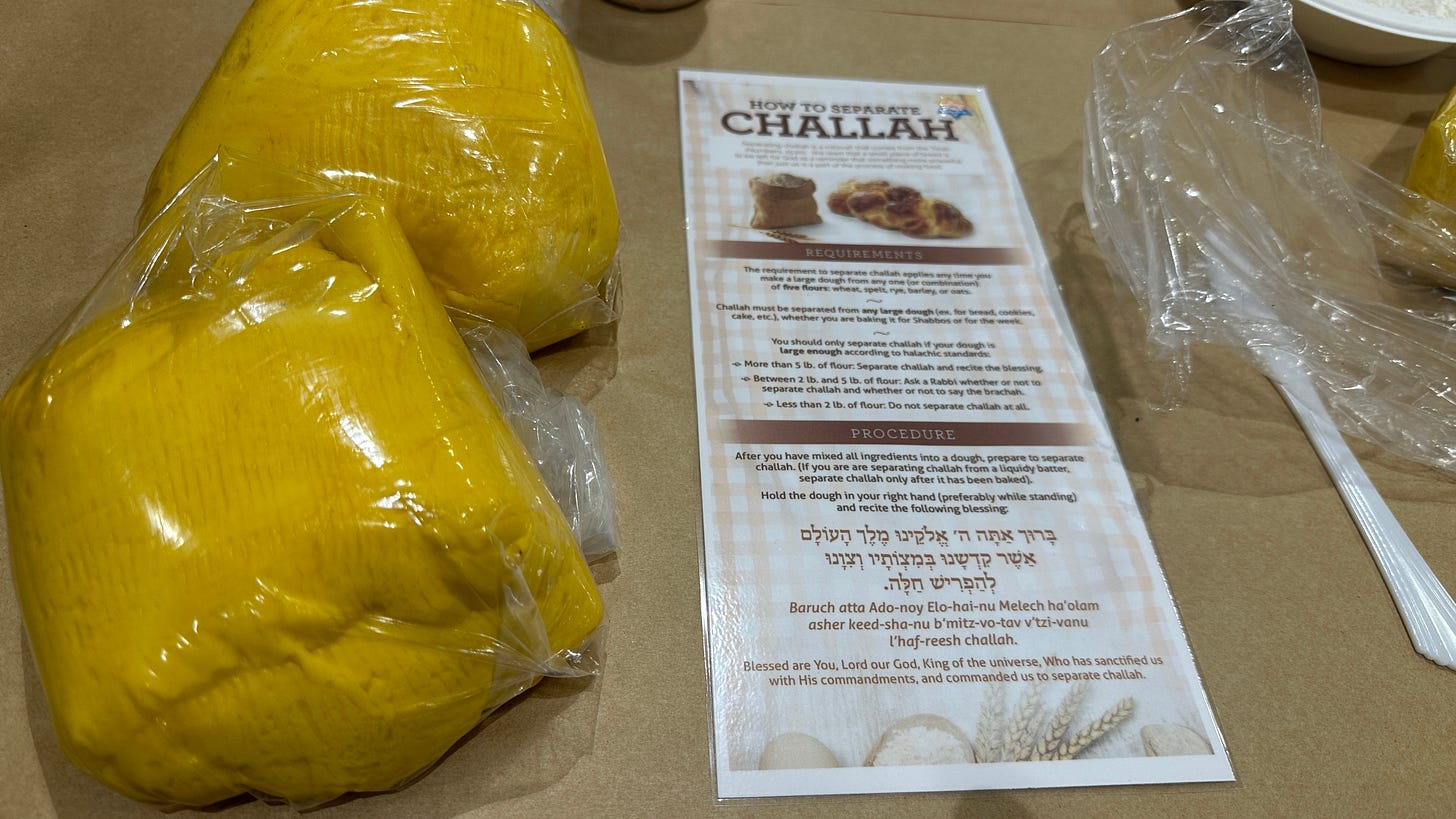
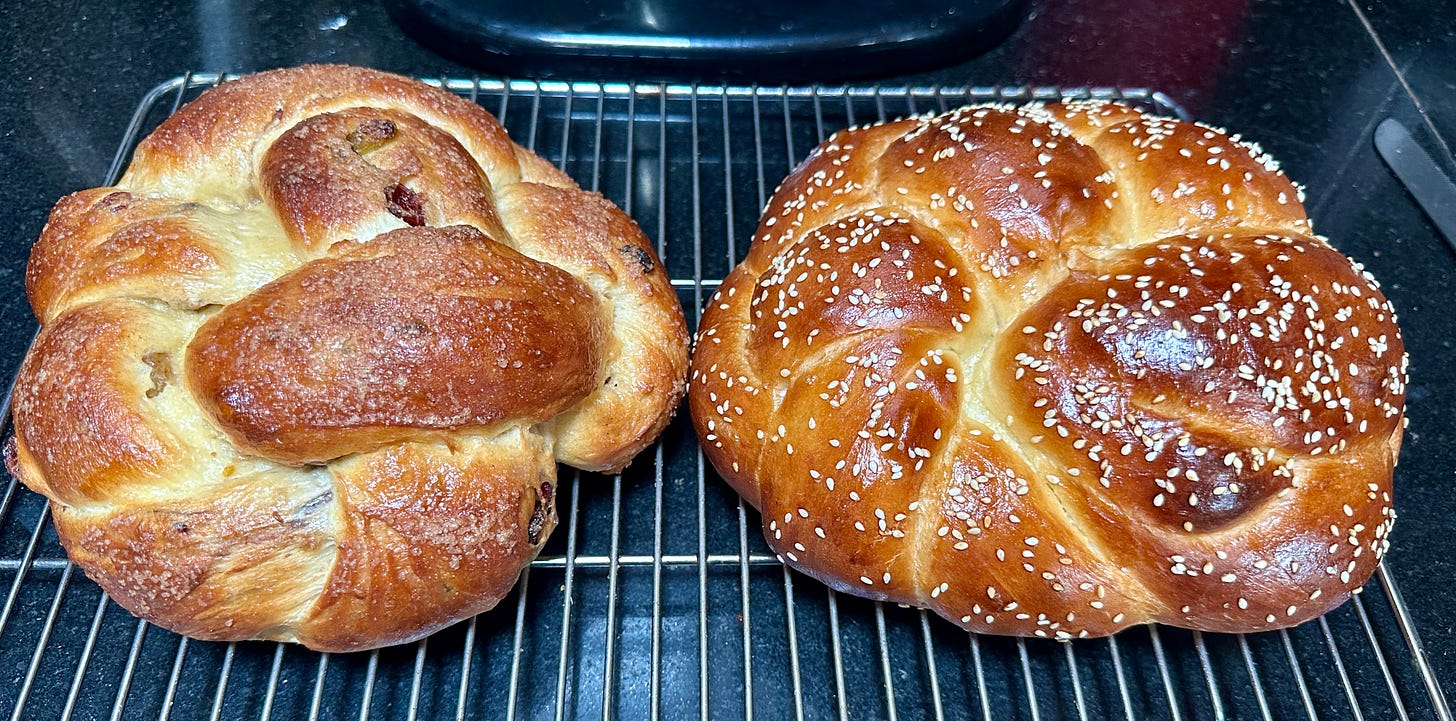
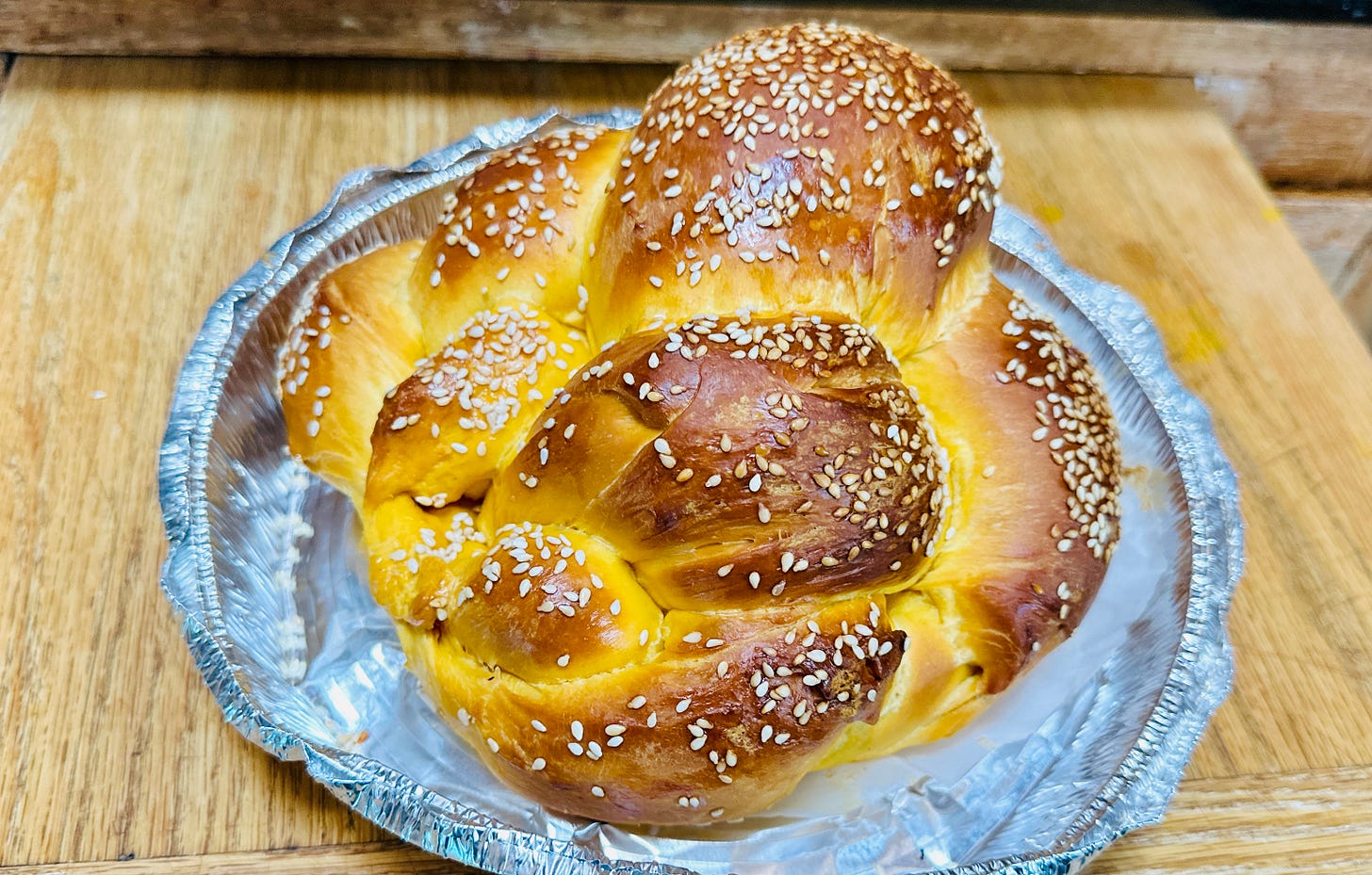
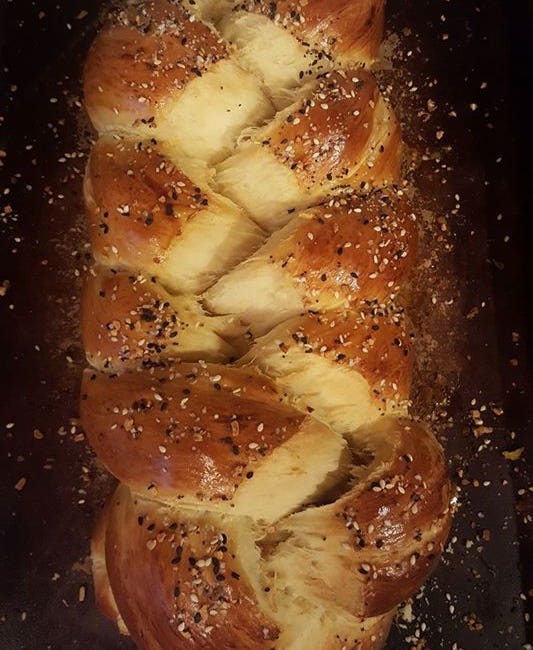
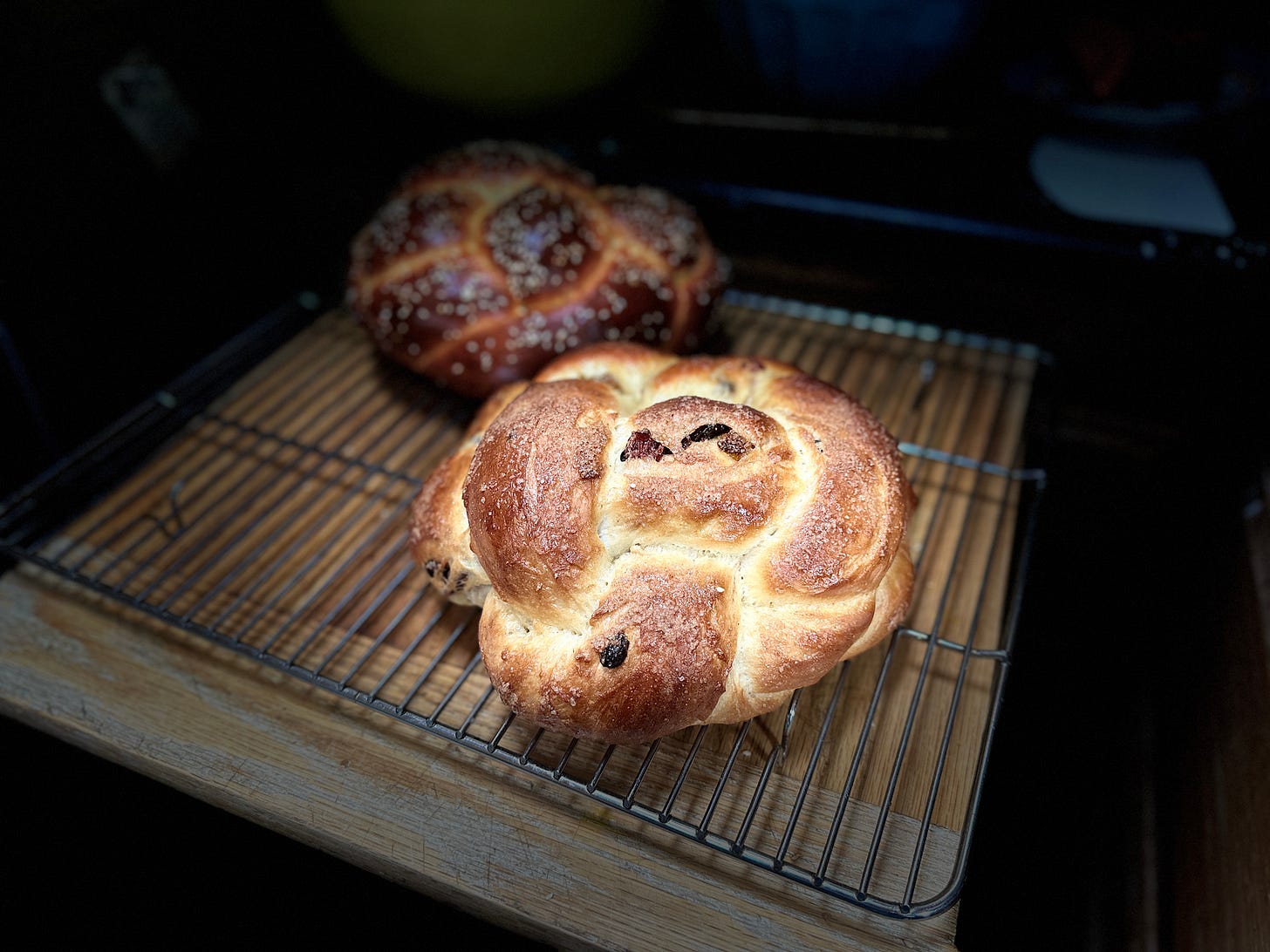
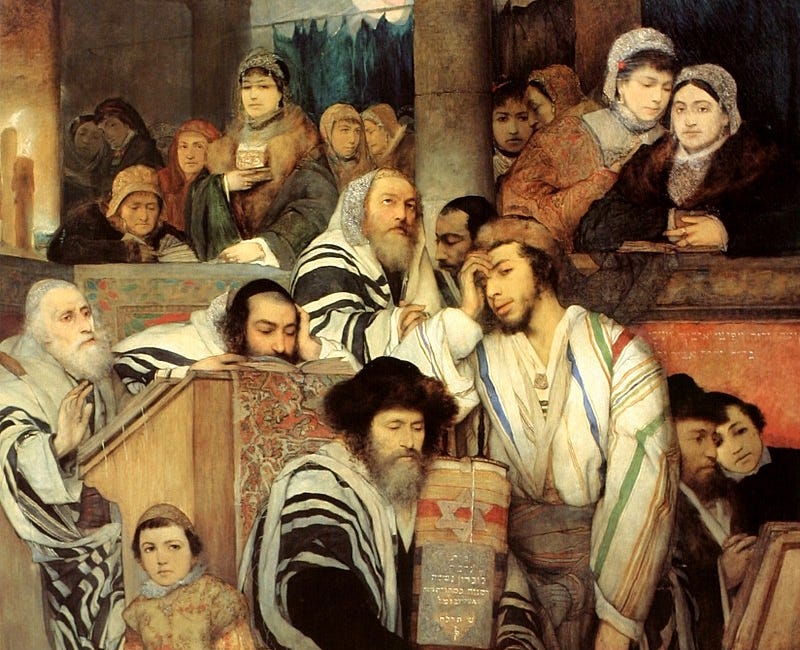
A very belated shana tovah, Ruth!! This piece made me smile. You’re so right about challah making the absolute best French toast--my mom’s favorite fancy breakfast to make for guests is a crème brûlée French toast with (store-bought) challah, and it’s so, so good. I’ve never made challah at home. I do love making babka, but for some reason it never occurred to me to attempt challah! I’ll have to give it a try.
If there was a Chamber of Commerce for challah, you could run it Ruth!